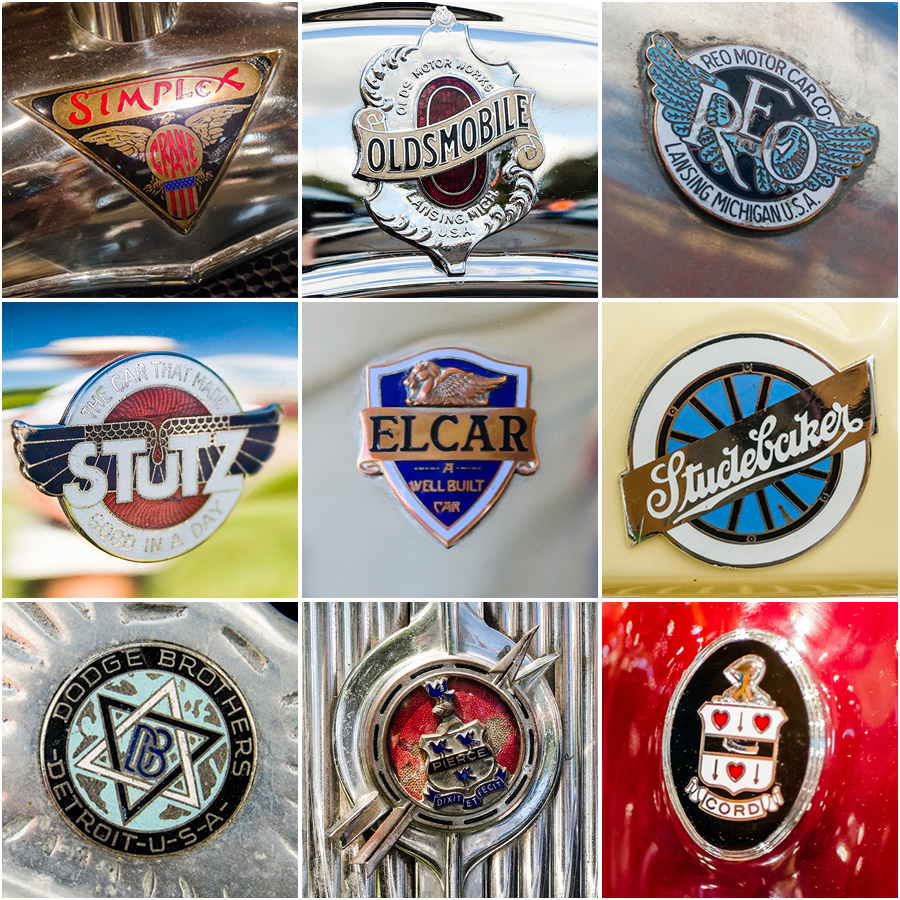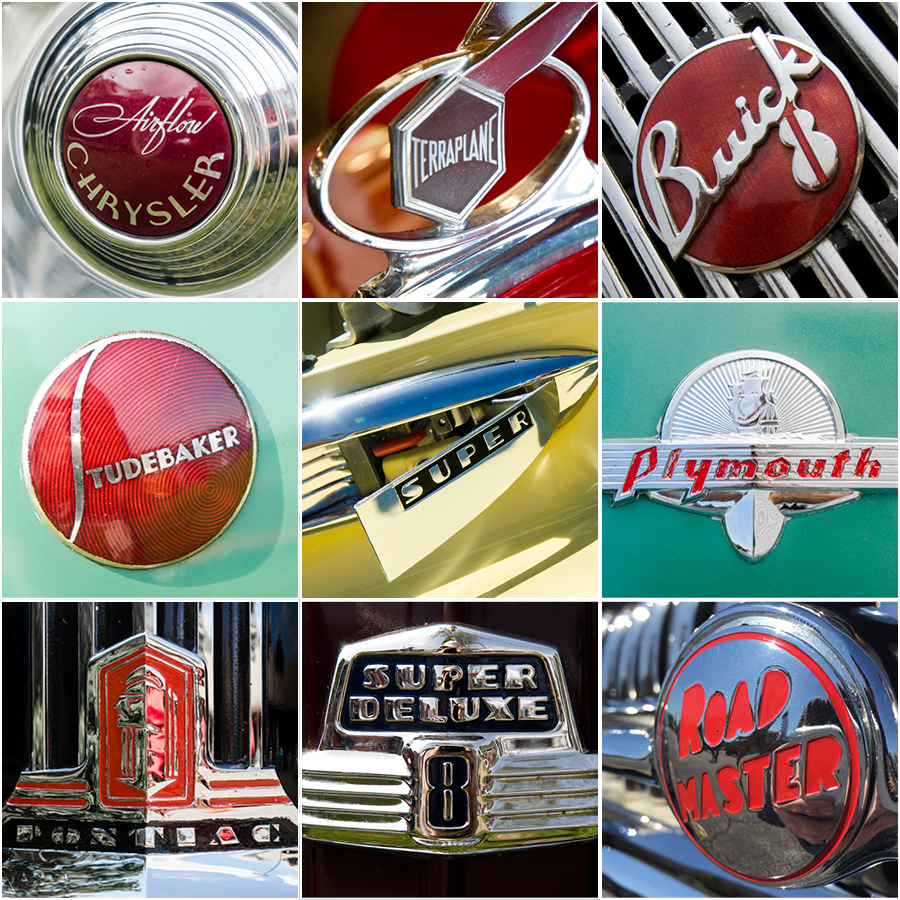I’m getting back to my automotive type series. This week, I’m focusing on alphanumeric badges.
These days, alphanumeric names are common with cars. I own an MX-5 and a 128i. One of my neighbors owns an ATS and another owns a CR-V. There was a time when american cars used alphanumeric or numeric names to define trim levels or special editions. They all got their own unique badges.
Below are some of my favorite alphanumeric badges from the ‘50s, ’60s, and ‘70s, along with stories highlighting of a few of them.
The Oldsmobile F-85 (first column, 2nd image down) was the first compact car for the GM marque and a rare ‘60s example of a model with an alphanumeric name, but a proper name for the top-of-the-line trim level – Cutlass. You can figure out where that led. As for the badge, it’s got loads of character in that fantastic script F.
In the ‘60s, Mercury used alphanumeric designations for their trim upgrades. S-22 for the upscale version of the compact Comet, S-33 for the midsize Meteor, and S-55 for the well-optioned, high-performance full-sized Monterey. The example shown here, (right below the F-85 pic) is from a 1966 model. Another example of a great script contrasting with tight, modern numerals. I’m also digging the pop of red behind the numbers.
The GT badge from the 19654-66 Dodge Dart (center image) is one of my all-time favorites. While the model is not a heavyweight as far as classic MoPars go, its badge is fantastic! That whiplash script G weaving its way around a traditional serif T is a great example of mid-century sculpture.
One of the more well known American alphanumeric names is Z28 (1971 example, 3rd column, bottom image). The performance model Camaro got its name from an uninspiring source. In 1967, a special package for road racing was offered that included a special small, high-revving engine, heavy-duty drivetrain, heavy-duty suspension, and special disc brakes. The factory product package code was “Z28.” There was no dramatic marketing, just a code next to a checkbox on a form. Now the name is the stuff of legends.
If you’re interested in digging deeper into badge type design, check out writer and type expert Steven Coles’ excellent Tumblr page, Chromeography.
Interested in a print of one of my badge photos? Visit my store and place an order.
Left column, top to bottom: 1956 Oldsmobile, 1964 Oldsmobile, 1966 Mercury Monterey, 1967 Buick. Middle column, top to bottom, 1960 Chrysler, 1964-66 Dodge Dart, 1966 Ford Mustang. Right column, top to bottom: 1960 Dodge Phoenix, 1963 Ford Galaxie, 1965 Pontiac LeMans, 1971 Chevrolet Camaro.











